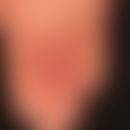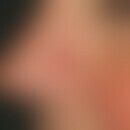Synonym(s)
DefinitionThis section has been translated automatically.
Avenae stramentum, also known as oat straw, the particularly soft straw of the oat.
Commission E-Monograph: externally for inflammatory and seborrhoeic skin diseases, as a bath additive, especially with itching.
Empirical medicine: Externally: adjuvant for weeping dermatoses, atopic eczema, sunburn, chilblains, eye complaints, abdominal weakness in women, bladder complaints, gouty and rheumatic complaints, metabolic diseases, usually as a full bath (100 g oat straw per bath). As a foot bath for chronically cold and/or very tired feet. Effectiveness here not proven.
as a green oat tea: strengthens and invigorates the excretory function - in combination with nettle leaves, lady's mantle herb, raspberry leaves as a diuretic for rheumatism and gout, also for lowering elevated uric acid levels
IngredientsThis section has been translated automatically.
Avenae stramentum contains silicic acid (in the ashes 55 to 75%), flavonoids and triterpene saponins.
You might also be interested in
EffectsThis section has been translated automatically.
Oatstraw has antiphlogistic, astringent and antipruritic effects.
Field of application/useThis section has been translated automatically.
Oat straw is used for the treatment of inflammatory and seborrheic skin diseases, weeping dermatoses and atopic eczema
DosageThis section has been translated automatically.
100 g of the drug for a full bath.
Undesirable effectsThis section has been translated automatically.
There are no known adverse effects.
ContraindicationThis section has been translated automatically.
There are no known contraindications. However, full baths are generally not recommended in cases of extensive weeping dermatoses, febrile diseases or relevant heart failure.
Note(s)This section has been translated automatically.
The use of oat straw has two disadvantages. Oat straw has a sometimes very unpleasant odour as a preparation and, as a raw extract, consists of a dark black liquid; this can lead to discolouration of the bathtub.
The seed oat was chosen as the medicinal plant of the year 2017.
LiteratureThis section has been translated automatically.
- Schilcher H (2016) Leitfaden Phytotherapie, Urban & Fischer Verlag Munich, p. 148 f.
- https://arzneipflanzenlexikon.info/hafer.php
- Wenigmann M. (2017) Phytotherapy medicinal drugs, phytopharmaceuticals, application. Urban & Fischer, pp. 117-118
- https://www.awl.ch/heilpflanzen/avena_sativa/hafer.htm




